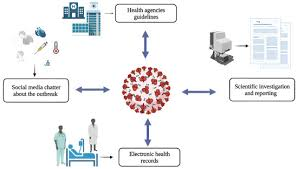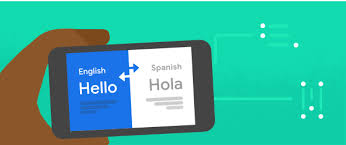Introduction to NLP: A Beginner's Guide to Understanding What NLP is, Its Applications, and Its Significance in the Modern World
Introduction to NLP: A Beginner's Guide to Understanding What NLP is, Its Applications, and Its Significance
In today's fast-paced digital age, technology continues to push the boundaries of what is possible, revolutionizing the way we interact with computers and information. One such innovation that has garnered widespread attention and relevance is Natural Language Processing (NLP). NLP is a fascinating field of artificial intelligence (AI) that focuses on bridging the gap between human language and computer understanding. In this beginner's guide, we will delve into the world of NLP, exploring what it is, its diverse applications, and its significance in shaping the modern world.
What is Natural Language Processing (NLP)?
Natural Language Processing is an interdisciplinary area of AI that combines computer science, linguistics, and cognitive psychology to enable computers to understand, interpret, and generate human language in a manner that is both meaningful and contextually relevant. The ultimate goal of NLP is to create computer systems that can interact with humans in a manner that is as natural and intuitive as possible.
At its core, NLP seeks to transform unstructured language data, such as text and speech, into structured data that machines can process, analyze, and act upon. It involves a wide range of techniques, including text analysis, computational linguistics, machine learning, and deep learning, which collectively empower computers to derive insights, extract information, and even hold conversations with humans.
Applications of NLP
NLP has witnessed widespread adoption across various industries and domains, significantly impacting the way we live, work, and interact with technology. Some of the key applications of NLP include:
2. Sentiment Analysis: NLP is widely used in social media monitoring and customer feedback analysis. Sentiment analysis algorithms can determine the emotional tone of a text, helping businesses gauge public opinion about their products or services.
3. Machine Translation: NLP is essential for machine translation services like Google Translate, allowing people to communicate across language barriers and fostering global connectivity.
4. Chatbots and Customer Support: Many companies employ NLP-powered chatbots to provide instant customer support, address queries, and guide users through their websites.
5. Information Extraction: NLP techniques help extract useful information from vast amounts of unstructured data, such as news articles, research papers, and legal documents.
6. Text Summarization: NLP can automatically generate concise summaries of lengthy documents, aiding in quick information retrieval.
7. Healthcare: NLP is utilized in processing medical records, extracting relevant information, and even diagnosing certain medical conditions.
8. Fraud Detection: NLP algorithms can help identify fraudulent activities by analyzing text data, such as emails or transaction records.
Significance of NLP in the Modern World
The growing significance of NLP in the modern world cannot be overstated. It has transformed the way we interact with technology and has opened up new possibilities in various sectors. Here are some of the key reasons why NLP is so important:
1. Improved Human-Computer Interaction: NLP has made human-computer interaction more intuitive and natural, reducing the barriers for technology adoption.
2. Efficient Information Processing: With the enormous amount of data generated every day, NLP enables us to process and understand textual information at scale, extracting valuable insights.
3. Enhanced Accessibility: NLP has played a crucial role in making technology more accessible to people with disabilities, enabling voice-controlled devices and aiding those with reading difficulties.
Virtual assistant using voice
4. Personalization and Recommendations: NLP-driven personalized recommendations in e-commerce, entertainment, and content platforms enhance user experience and increase engagement.
5. Data Analysis and Decision Making: NLP empowers businesses and researchers to analyze vast volumes of text data, making data-driven decisions and gaining a competitive edge.
6. Language Diversity: NLP has been instrumental in preserving and promoting language diversity by facilitating translation and documentation of lesser-known languages.
7. Advancements in AI Research: Progress in NLP has paved the way for advancements in other AI-related fields like computer vision and robotics.
Challenges and Future Directions
While NLP has achieved remarkable progress, it still faces several challenges. Ambiguity, understanding context, and handling sarcasm and humor in human language remain complex problems for NLP systems. Research in areas like Explainable AI (XAI) is critical to ensuring the transparency and interpretability of NLP models.
In the future, we can expect NLP to continue evolving, breaking language barriers further, and playing a central role in advancing AI applications across domains. As technology progresses, NLP is likely to integrate more seamlessly into our daily lives, becoming an indispensable part of the modern human-machine interaction landscape.
Conclusion
Natural Language Processing is a transformative technology that has revolutionized the way we interact with computers and process language data. From virtual assistants to sentiment analysis and healthcare applications, NLP's influence spans across numerous industries, enhancing efficiency and personalization. As NLP continues to advance, it holds the potential to reshape the way we perceive and utilize information, bringing us closer to a future where technology truly understands and adapts to human language in ways we once thought were purely the stuff of science fiction.















Comments
Post a Comment
If you have any queries. Let me know